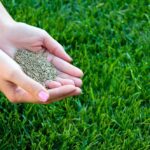The walls of your home can be a focal point that grabs everyone’s attention when they’re creatively painted and decorated. Stark-white walls can seem cold and unwelcoming, and they might not represent your desired vision for your indoor space. If you’re looking to warm up a monochromatic room, you can easily revitalize the space just by adding texture and nuance.
Texture coating is one way to do this. As its name implies, texture painting is the rough, gritty process of applying paint to create interesting effects, finishes, or illusions. Texture painting doesn’t just add character and depth to your walls, it also helps conceal surface imperfections. More importantly, the process is easy to do with just a few simple tools and some technical know-how.

Here are some of the most common texture-coating techniques:
- Ragging Or Rag-Rolling
When using this technique, the painter rolls the paint on or pulls it off irregularly using a bunched-up or twisted rag to achieve the look of dated leather. You can do rag rolling after applying the base coat and letting it completely dry. A rag is then dipped into the paint until it is completely saturated and then bunched up into a ball shape before being rolled across the paint surface.
- Sponging
One of the most straightforward texture painting techniques to learn is sponging. All you need is a natural sea sponge and two to three paint colors to add texture, color, and dimension to a room. First, apply the base coat and let it dry completely. You will then dip the sponge into a paint mixture and gently dab it in random patterns on your wall. You can also use a different glaze color to create a bolder and more dramatic effect.
- Frottage
Frottage is a painting technique that aims to produce a rich, textured finish on a freshly painted wall. It comes from French word for rubbing. Fabric, film, wrinkled paper or any thin material is pressed on fresh glaze, rubbed, and then peeled off. The technique creates a blended, seam-like effect perfect for those looking a soft, aged accent for their contemporary home.
- Stripling
Stripling is a method which involves creating tiny dots to produce a refined texture on walls. This method is an ancient technique that traces its origin to the 1500s when people used it for engraving. Modern painters use this technique by applying a base coat and then creating varying degrees of shading using a brush with sturdy bristles. The shading will depend on the closeness, boldness, and organization of the dots.
- Stenciling
Stenciling involves painting over a plastic sheet to create designs and patterns on a wall. To do this technique, prepare the wall with base paint and let it dry completely. You also need several tools, such as a stencil, stencil adhesive, stencil paint, a roller, and a stencil brush. Once you have the tools, stick the stencil on your wall and apply it sparingly, as the technique requires very little paint. If you’re wondering how to use stencils, here’s a guide over at A Maker’s Studio to help you make the most of these versatile tools in your home.
- Color Wash
Color washing, also known as ‘broken finish,’ is a technique that helps create an authentic old-world look. This technique blends different colors to create a delicate wash that makes the paint feel like it has weathered in time. It’s a reasonably simple technique, as you only have to apply a thin, lustrous glaze on a contrasting base color. Using light brush strokes, you can produce a soft, diffused texture.
- Dragging
Dragging, also known as strie, is a painting technique used to create a textured wall pattern with translucent glaze or paint. This technique produces a soft washboard or striped patterns with an antique ambiance. It gives your walls the semblance of fabric such as linen or denim and is an excellent choice for bedrooms. To produce a pattern, drag a long-bristled brush over wet wall paint.

Choosing The Best Method For Your Home
If you want to add more definition and warmth to your home, then texture painting can effectively achieve that. Besides the techniques mentioned above, various wall textures will determine the best texture paint for your home. Some of the wall textures that are common in many homes today include:
- Comb
- Popcorn
- Orange peel
- Sand swirl
- Metallic texture
- Trowel
- Cracked and peeled texture
- Knockdown effect
Final Thoughts
Although these are some of the most popular methods to decorate your walls at home, there are numerous other ways that you can achieve the same. Texture painting is all about experimenting with various techniques and tools to give your bland, uninspired walls a whole new feel. These techniques bring personality and visual interest that a single colour choice simply cannot.





